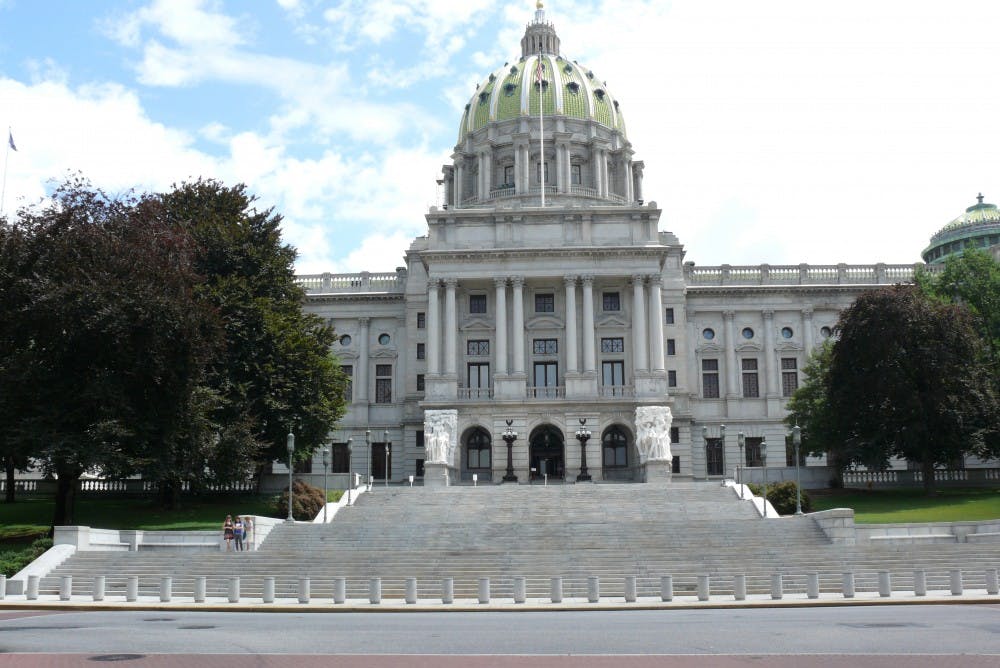The Pennsylvania Supreme Court released an updated state congressional map on Feb. 19, redistricting the University of Pennsylvania from the 2nd Congressional District to the 3rd Congressional District — a map drawn by former Penn Law professor Nathaniel Persily.
The Court upheld its decision Monday, March 19, after a failed second attempt by Republican lawmakers to overturn the decision that stated the previous district lines were influenced by gerrymandering. The new map will likely be effective in this upcoming election.
The decision was made in January after the state Supreme Court ruled that the previous map violated the state Constitution due to gerrymandering. Since the old map's implementation in 2011, Republicans have won 13 out of Pennsylvania's 18 districts, despite never gaining more than 55 percent of the vote.

An expert in redistricting and election law, Persily has drawn districts for Georgia, Maryland, Connecticut, New York, and North Carolina, and was selected by the state Supreme Court to draw the map after Governor Tom Wolf (D) rejected the Republican House's proposal in Feb.
The updated map has major ramifications for Penn, as students and faculty will now cast their votes in the 3rd Congressional District instead of the 2nd. In the old 2011 map, the City of Philadelphia was almost entirely encompassed in the 2nd district.
Election experts estimate Democrats could now compete in eight to 11 of the new seats. State Republicans have blasted the new map, accusing the court of partisan favoring of Democrats.
According to the Washington Post, Democrats could see a net gain of three or four seats in November’s midterm elections, which would provide a crucial boost in the party’s bid to reclaim control of the House of Representatives.
RELATED:
Penn alum Conor Lamb wins Democratic House seat after tight special election race
Pennsylvania must redraw voting districts by mid-February, PA Supreme Court ruled Monday
Persily taught election law and political science at Penn from 2001 to 2007. He taught courses titled Law and the Political Process, Contemporary Issues in Law and Politics, as well as courses on constitutional law and the first amendment. Persily is now the James B. McClatchy Professor of Law at Stanford Law School in addition to teaching in the departments of Political Science, Communication and the Stanford Freeman Spogli Institute.
Persily declined an interview for this article as he cannot speak about the case publicly.
In his 2005 essay 'When Judges Carve Democracies,' Persily called maps drawn up by courts a “last resort” and an "emergency measur[e]." Additionally, he said that creating congressional districts is the “stuff of the legislative, not the judicial, process.”
Penn Law professor Jerry Goldfeder explained that “independent redistricting commissions, or nonpartisan redistricting commissions, generally produce maps that are fair and relatively acceptable to both sides.”
“When a court is compelled to draw lines, relying on a special master or an expert to do so, it should remind legislatures that they have the opportunity to do so if they can come to an agreement,” Goldfeder said. “The courts involvement should incentivize a legislature to work out their differences and come to a resolution,” he added.
College senior Gabe Solomon was in favor of the Supreme Court decision, and explained that he thought the new map was more fair and representational of "Pennsylvania's political identity." He added that as a voter the new map made him feel more comfortable that he is "voting in a place that will send members of Congress [who] accurately reflect who lives here."
The new districts are thought to favor the Democratic party, and Penn political science professor Marc Meredith said that previous estimates and the new districts may benefit Democrats in PA during the 2018 midterms.
Both Meredith and Goldfeder agree that this case may set a precedent for gerrymandering suits to be considered under state law instead of federal law, though this may depend on the outcome of several cases currently in front of the U.S. Supreme Court.
President Trump weighed in on Twitter on Feb. 20, urging Pennsylvania Republicans to fight the case all the way to the Supreme Court.
“Your Original was correct!” Trump wrote. “Don’t let the Dems take elections away from you so that they can raise taxes & waste money!”
Republican legislators have already challenged the map in both federal and district courts. These challenges are not expected to get very far and Persily’s congressional district map is expected to be implemented for the midterm elections.
“You don’t want to see politicians choosing their voters," Solomon said.



